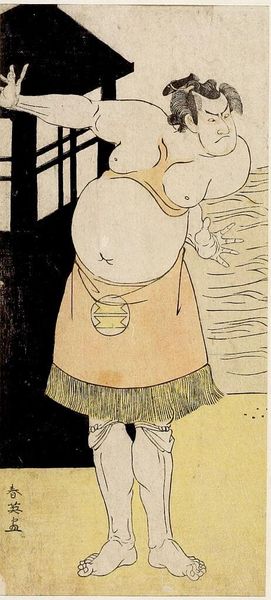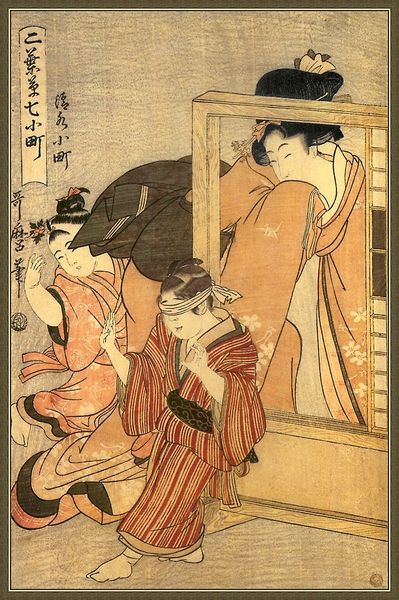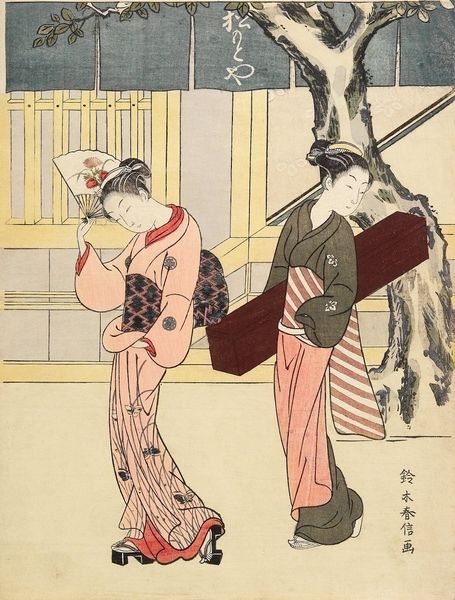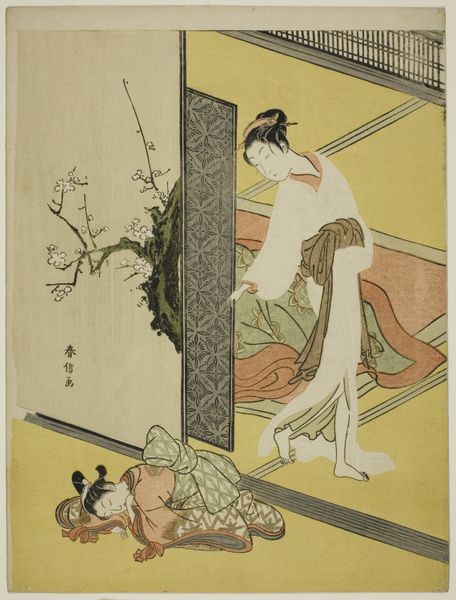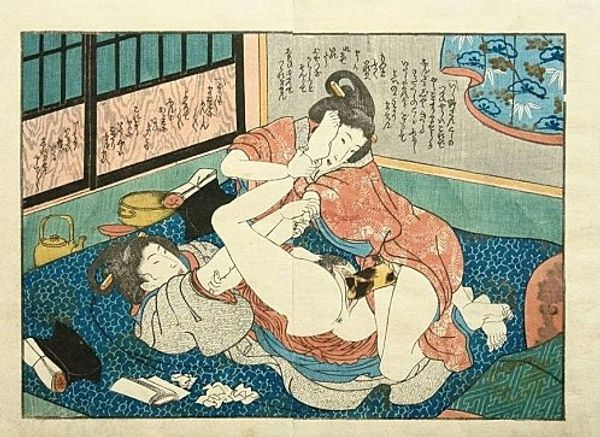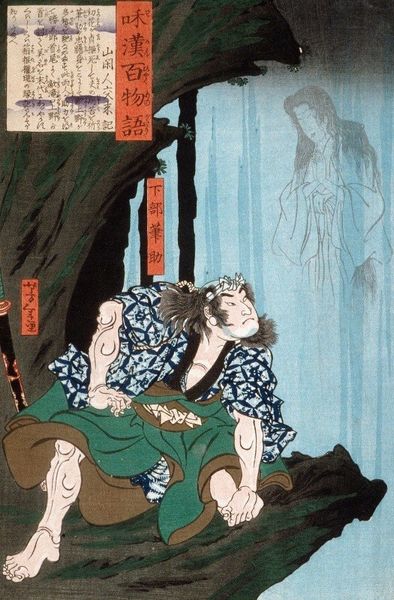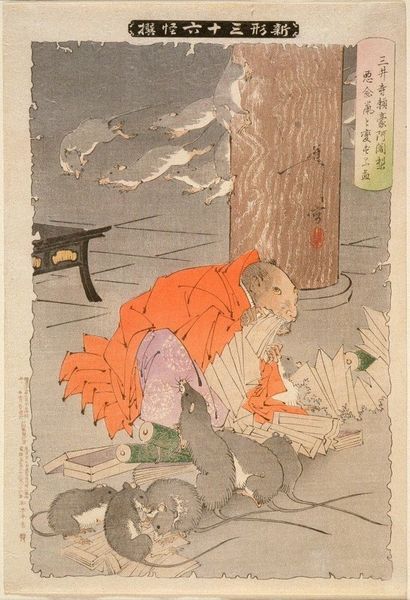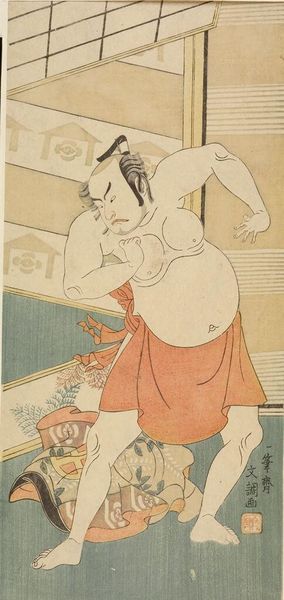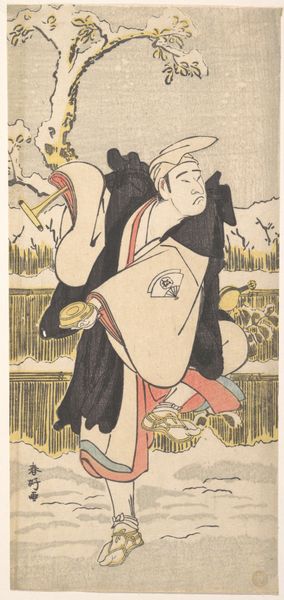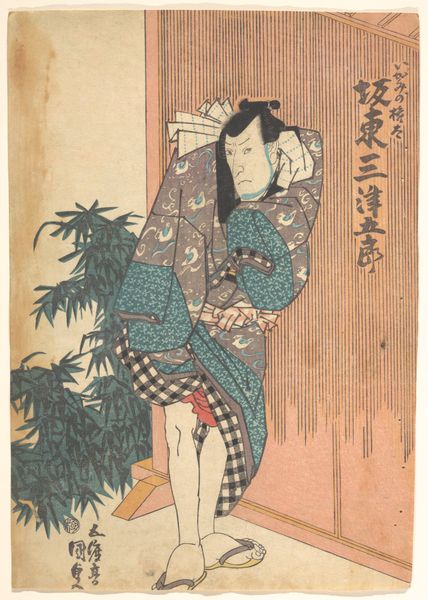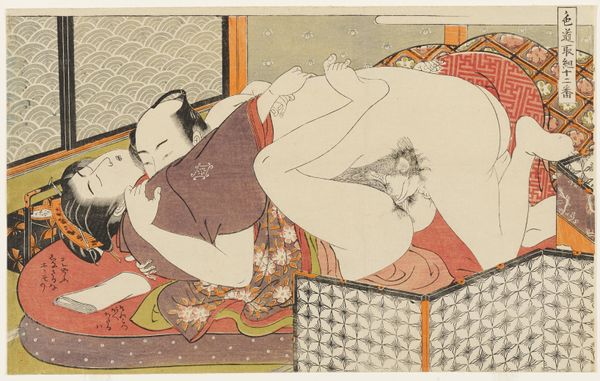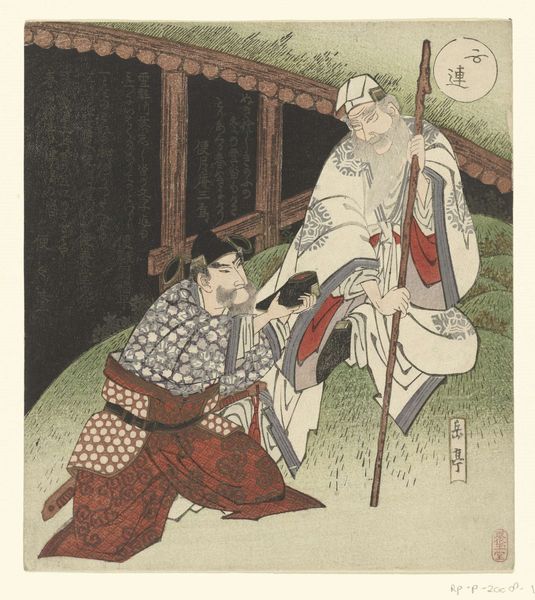
#
unusual home photography
#
water colours
#
asian-art
#
handmade artwork painting
#
oil painting
#
underpainting
#
painting painterly
#
watercolour bleed
#
watercolour illustration
#
watercolor
#
watercolur painting
Copyright: Public Domain: Artvee
Curator: Looking at "The Lonely House on Adachi Moor in Northern Japan," a woodblock print from 1885 by Tsukioka Yoshitoshi, one is immediately struck by its starkness. The composition is dominated by unsettling imagery. Editor: Yes, disturbing is definitely the word that springs to mind. The high-contrast color palette really amplifies the horror. I can’t help but see a deeply disturbing commentary on violence against women, a body hanging so centrally, practically butchered in preparation by the looks of things...it's harrowing. Curator: Indeed. Yoshitoshi worked during a period of immense social and political upheaval in Japan as the country rapidly modernized. His art frequently reflects anxieties about tradition clashing with modernity, often portraying scenes of intense violence or supernatural horror drawn from folklore and history. Editor: That makes me consider the role of folklore and how women are often demonized within it. The setting – a remote house – also isolates the woman and makes her vulnerable. It is quite deliberate I think in underscoring her subjugation. Curator: Certainly. The print likely draws on themes of betrayal and revenge, quite popular in Kabuki theatre and other forms of entertainment at the time, though the precise story Yoshitoshi alludes to remains somewhat obscure today. The other figures, though less emphasized, appear complicit or at least accepting. This contributes to the unsettling atmosphere. Editor: Absolutely. What’s particularly jarring for me is the seeming indifference to the atrocity taking place. I read that against the history of ingrained sexism within institutions and how readily society normalizes violence in certain instances. The past sadly echoes even into our current cultural landscape, doesn’t it? Curator: Precisely. Yoshitoshi’s willingness to confront darkness within society, while disturbing, provided a space to explore cultural anxieties and power dynamics rarely seen with such force in the art of his time. Editor: And it reminds us of the ongoing struggle for visibility, representation, and justice, using a visceral piece like this forces a response—a kind of urgent awareness, perhaps. Curator: Agreed, there are aspects that remain unresolved for modern eyes. The lasting power may lie precisely in provoking continued critical engagement.
Comments
No comments
Be the first to comment and join the conversation on the ultimate creative platform.

